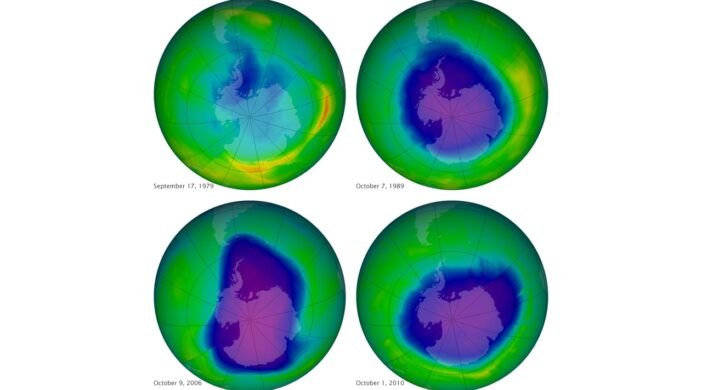There’s good news and bad news in the latest scientific assessment of Earth’s vital ozone layer, which helps to protect life on Earth by absorbing the Sun’s ultraviolet light.
The good news is the ozone layer is on track to recover 35 years after an international agreement called the Montreal Protocol began the phase out of chemicals that were destroying it.
The bad news? We might be on the verge of screwing it up again. The possible culprit: the rapid progress we’re making in space.
“Rocket launches presently have a small effect on total stratospheric ozone (much less than 0.1%). However, rocket systems using new propellants (e.g., hydrogen and methane) could exert a substantial influence in the future. The future scenarios of space industry emissions consider the potential for a significant increase in launch rates, the adoption of new launch-vehicle propellants, and an increase in middle-atmosphere aerosol and the production of NO (nitrogen monoxide) by reentering space debris. Many of the impacts of rocket activity involve chemistry and radiative interactions that are poorly understood and, in some cases, not yet studied,” according to the Scientific Assessment of Ozone Depletion: 2022 report. [Executive Summary]
But, it’s not just space launches that are of concern. It’s the payloads the rockets are launching.
“Furthermore, the planned development of massive low-Earth orbit satellite constellations (mega constellations) could cause particulates resulting from space debris reentry to become comparable to that from launch emissions; little is known about the impacts of reentry particles, and their accumulation in the stratosphere has not been modeled. The uncertainties in these processes and in any potential new emission sources limit the confidence level of predictions of present and future impacts of space industry emissions on stratospheric ozone. Periodic assessment and critical knowledge gap identification are warranted,” the report added.
The report was issued by the World Meteorological Organization, United Nations Environmental Programme, European Commission, NASA and the National Oceanic and Atmospheric Administration.
The report raise concerns about SpaceX’s two largest programs, Starship and Starlink. The company’s massive Starship/Super Heavy will be fueled by liquid methane and liquid oxygen. The first test launch is expected to be conducted within the next two months.
SpaceX CEO Elon Musk plans to use the new rocket to colonize Mars and further human exploration of space. He has spoken of the need for humanity to become a multi-planet species so it won’t be wiped out if Earth is rendered uninhabitable. Musk has said Starship/Super Heavy will be able to launch frequently with airplane-like operations.
SpaceX isn’t the only launch provider planning to use methane. Blue Origin’s BE-4 engine will use liquified natural gas, which is predominantly methane with a mixture of ethane. The BE-4 will power Blue Origin’s large New Glenn rocket and the first stage of United Launch Alliance’s Vulcan Centaur booster.
Last month, China’s LandSpace attempted the first launch of a rocket powered by methane. The Zhuque-2 rocket failed to reach orbit when a vernier engine on the second stage malfunctioned.
SpaceX and other companies around the world are planning to launch tens of thousands of satellites in the decade ahead to provide broadband communications, Earth observation and other services. Most of these satellites will be disposed of in the atmosphere at the end of their lifetimes, depositing particles that could damage the ozone layer.
Last month, the Federal Communications Commission (FCC) approved a plan for the company to launch 7,500 Starlink Gen2 satellites. The approval covered only part of the 29,988 Starlink spacecraft that SpaceX proposed to launch. FCC is continuing to evaluate the rest of the proposal.
SpaceX has already launched more than 3,600 Starlink G1 satellites. Hundreds of the spacecraft have already reentered the atmosphere. SpaceX plans to dispose of defunct satellites in a similar manner.
Other large constellations are either being launched or are in the planning stages. A Chinese company is planning to launch more than 13,000 satellites to provide broadband services. Amazon’s Kuiper communications constellation will consist of 3,236 spacecraft. OneWeb is close to completing deployment of an 848-satellite broadband constellation.

